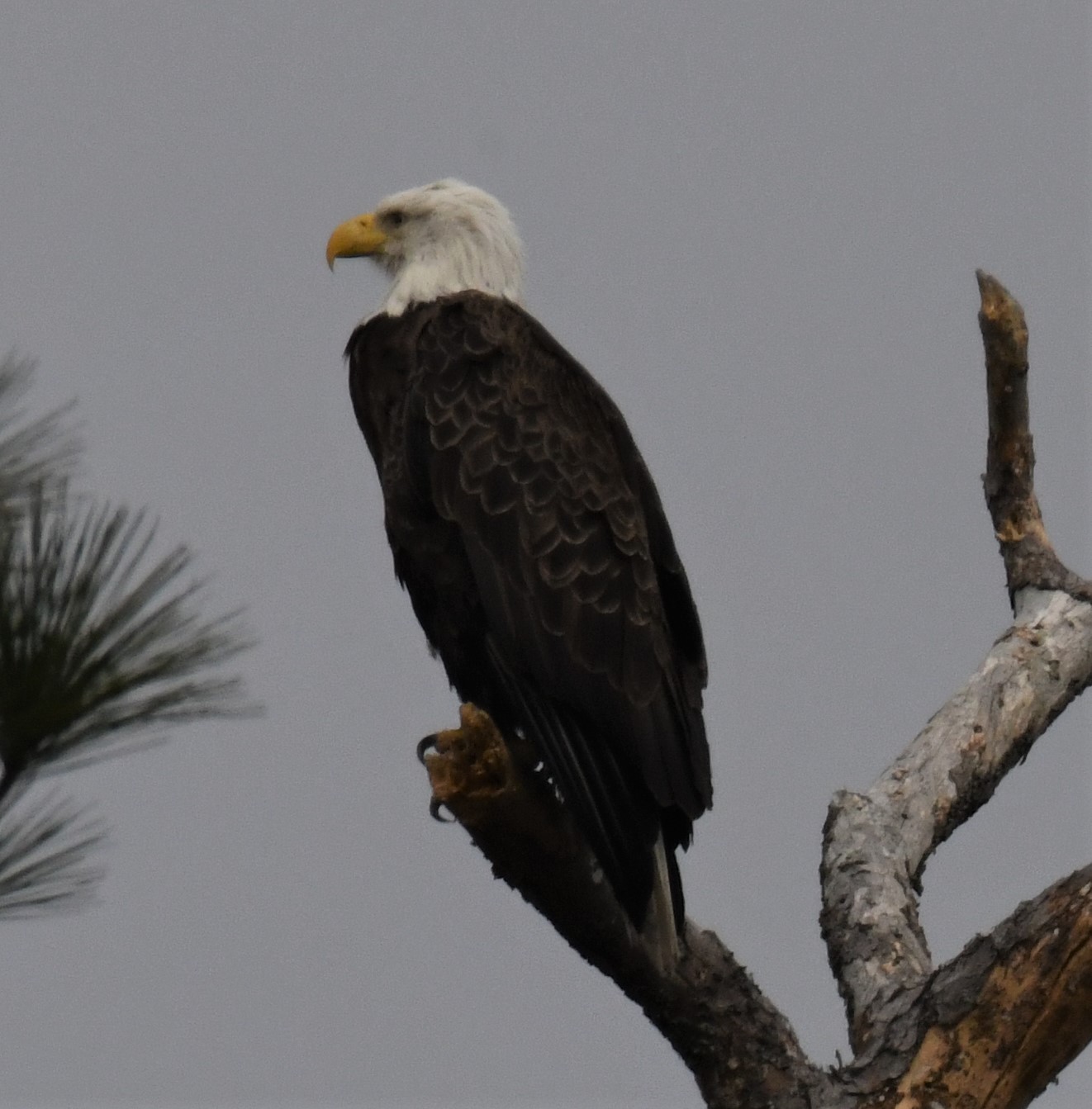
By Mary Reid Barrow
When a juvenile bald eagle innocently flew north over the marsh off 64th Street in First Landing State Park recently, it didn’t know it was intruding
But was it ever! The young eagle was trespassng in the territory where the first new bald eagle nest to be reported in Virginia Beach this year was built. Not only that, the eagle pair was the first pair in memory to nest on that side of the park where the ospreys reign.
Out of the blue, a big adult bald eagle, loaded for bear, zoomed in from nowhere, and chased the youngster away The victor then perched defiantly in a nearby tree.
This eagle has the important job of protecting his mate, who was sitting on eggs in a big stick nest in a tall pine tree not far away.
That was my second visit to see the nest and Terri Gorman from LRNow was with me and took the photo of the female eagle down in the nest.
Thank heaven for a bald eagle’s white head or we might not have known about the nest at all. When it is photographed from afar, even with a big telephoto lens, that “bald” head is about all you can see that indicates the nest is in use.
About three weeks ago, local photographer Jeremy Helwig, disocvered the new nest and took a photo of it with the eagle head showing and sent it to raptor expert Reese Lukei. Reese alerted Robert Brown about this new nest down in the 64th Street osprey habitat. For years, Robert has been keeping tabs on the many ospreys that historically have nested along that stretch of 64thstreet.
Brown was able to quickly track the nest down. He invited Lukei, Erik Molleen, a District Resource Manager with the state parks, two park interns and me to come for a viewing.
We hadn’t been walking down the road for long when Reese’s eagle eyes picked up the male perched on the “guard” tree out in the marsh. Soon thereafter Robert pointed out the nest partially obscured by another pine tree in front of it, about three football fields away.

We were all excited about seeing the nest and Interns Barbara Oliver and McKenzie Mosher from Old Dominion University were over the moon. Barbara remembered watching the Norfolk Botanical Garden Eagle Cam as a student at Cape Henry Collegiate School. When she heard that Reese was the person who ran the eagle cam program, she couldn’t believe her ears.
He’s the most famous person I’ve ever met, that’s for sure, “ she said later.

Our excitement was a bit tempered by the fact that the nest is close to three well established osprey nests in that vicinity. Reese, Erik and Robert all were concerned that the presence of a new eagle’s nest could have an impact on this well established osprey nesting territory.
“Eagles and osprey do not co-exist very well,” Reese said.
Eagles are bigger than ospreys and confrontations between the two over territory and food could cause the ospreys to eventually nest somewhere else. On the other hand we can hope that if the Lynnhaven River and nearby ocean provide enough food for all, they could live as neighbors.
Our talk about an increase in the eagle population was confirmed for Reese as he crossed the Lynnhaven inlet on his way home that afternoon. He reported he saw eight(!) young bald eagles at the inlet, sitting around on oyster bars, channel markers and osprey nests.
“Going to be an interesting season!!!! he wrote.
Photo credits. Eagle on nest by Terri Gorman: male on his guard tree by Reese Lukei; group shot of Reese, me, McKenzie, Barbara and Erik by Robert Brown.
What wildlife action have you been seeing lately? What relationships have you observed between plants and critters? Send an email and photos to maryreid@lrnow.org